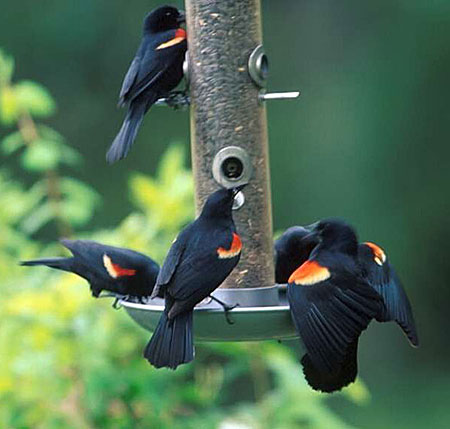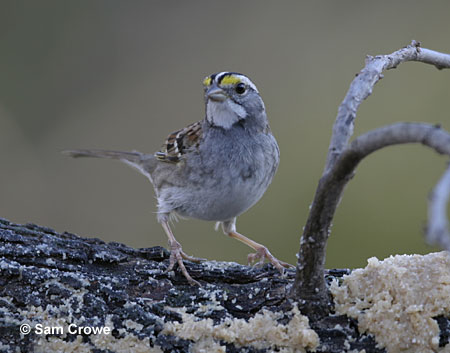Introduction to Feeding Birds
For many, their first interest in birds came from viewing a few common species in their backyard. The beautiful cardinal, the aggressive blue jay, a robin in the front yard or the noisy woodpecker can create that first spark.
For those just starting to feed birds, here are a few tips that will help.
1. You can feed all year
Many people feed birds only in the winter but feeding all year round can be helpful to the birds. This is especially true during the nesting season when an extra source of food is always welcome.
2. Give the birds time
It may take several days to 2 weeks or more for birds to locate your feeder and start coming to it regularly. You may find it more difficult to attract birds to your feeder if you start in the late spring or early summer when the wild food supply is at its peak.
It is normal to see fewer birds during parts of the year. If it appears they have abandoned you, just be patient, they will return.

Red-winged blackbirds enjoying a sunflower treat. Note the tray at the bottom of the feeder to prevent seed and hulls from falling to the ground.
3. Black oil sunflower – the best choice
Sunflower seed is the best all around seed to use and black oil is probably the best sunflower seed.
Until you learn more, avoid the seed mixes that you find at grocery stores and discount stores. Much of the seed in the mix may not be suitable for the birds in your area. Visit the bird feed section for more information on various types of bird feed.
4. Bird feeders
There are many different kinds of feeders. You can make your own or purchase one of the many different commercial brands. Some feeders are more suited for one species over another and some are more for decoration than actual use.
A simple platform feeder is a good way to start and attracts a variety of different species. A long narrow platform can accommodate several birds at once and minimizes contamination of the feeding area. Place only as much seed on the platform as is being consumed in a day or two. A platform feeder can be placed low, near the ground or higher on a pole or tree.

Feeding birds can be a very simple process. This White-throated Sparrow was attracted by homemade suet spread on a tree branch.
5. Practice safe feeding
Check your feeder regularly to be sure it is clean. Clean and wash the feeder if signs of mold or mildew are found on the feeder or in the feed. (A mix of 9 parts water and one part bleach works well. Soak and scrub well. The feeder should dry completely before returning to service.) Feeder care is important to bird safety and health.
6. Guess who’s coming to dinner – squirrels
If there are a lot of trees nearby, be prepared to protect the feeder from squirrel attacks. Squirrels can be fun to watch but they can eat a lot of bird feed in a short time. Plan on using a squirrel guard or squirrel proof feeder if you anticipate problems. The guide to bird feeders provides information on a variety of feeders, including those designed to thwart squirrels.
7. Store food properly
Store your bird seeds in a dry, sealed container to prevent insects and mice from going after the food. A small metal trashcan can do the trick.
Once started, you’ll find observing the birds that come to your feeder can become a fascinating hobby. You’ll see different birds at different times of the year. Each season’s young can offer something new. Pay special attention during spring and fall migration, you never know when a stranger might appear.
